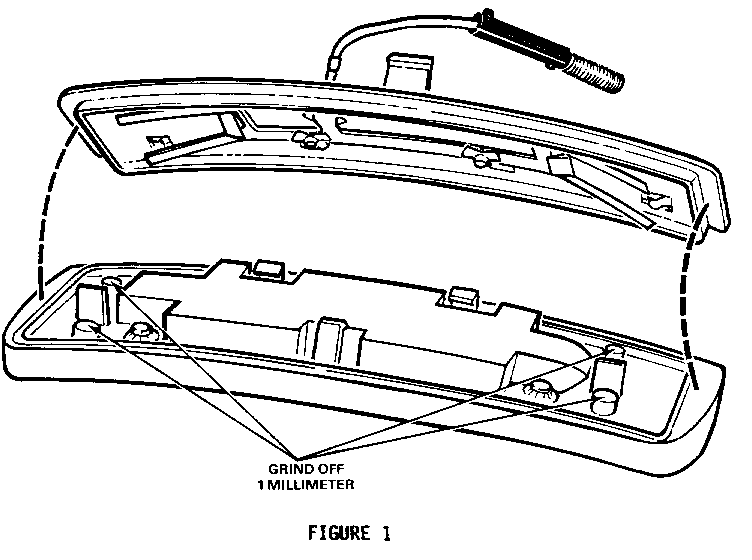HORN OVERLY SENSITIVE REPAIR PROCEDURES

VEHICLES AFFECTED: 1988 LESABRE AND ELECTRA WAGONS WITH STANDARD STEERING WHEEL, 1988 ELECTRA AND PARK AVENUE, WITH STANDARD STEERING WHEEL
If either of the above subject conditions are encountered, repair as follows:
CONDITION 1: Over sensitive, the horn blows inadvertently, the horn may blow when the door is slammed, or when any contact is made with the steering wheel. The effort necessary to blow the horn is very low.
POSSIBLE CAUSE:There is not adequate separation between the "hot" contacts and the ground contact points.
CORRECTION:
1. Remove the horn pad assembly from the steering wheel.
2. Unsnap the lower contact assembly from the upper padded portion of the horn pad assembly.
3. Remove 1.0mm of material from the four posts, as shown in Figure 1.
4. Reassemble the contact assembly to the upper pad assembly.
5. Assemble the horn pad to the steering wheel.
6. Check to be sure the horn functions properly.
CONDITION 2: Inoperative.
POSSIBLE CAUSE: The horn pad is not properly grounded to the column.
CORRECTION:
1. Remove the horn pad assembly from the steering wheel.
2. On the back of the horn pad assembly in the center, there is a metal tab that protrudes from the pad approximately 15-18mm (9/16"-11/16"). Bend this tab away from the assembly to a minimum of 21mm (3/4"), as shown in Figure 2.
3. Reinstall the horn pad on to the steering wheel.
4. Check to be sure that the horn now functions properly.


General Motors bulletins are intended for use by professional technicians, not a "do-it-yourselfer". They are written to inform those technicians of conditions that may occur on some vehicles, or to provide information that could assist in the proper service of a vehicle. Properly trained technicians have the equipment, tools, safety instructions and know-how to do a job properly and safely. If a condition is described, do not assume that the bulletin applies to your vehicle, or that your vehicle will have that condition. See a General Motors dealer servicing your brand of General Motors vehicle for information on whether your vehicle may benefit from the information.
